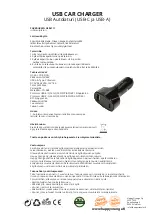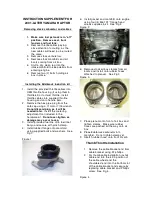
— Size class: the size class shown corre-
sponds to the permissible weight range of
the child using the seat. The size class is
indicated on the ECE approval label for
child seats with “universal” or “semi-uni-
versal” approval. A size class indication is
affixed to the child seat.
— X: seat not suitable for securing an ISOFIX
or i-Size child seat in this group.
— IL-SU: seat suitable for installing an ISOFIX
child seat with “semi-universal” approval.
Refer to the vehicle list supplied by the
child seat manufacturer.
— IUF: seat suitable for installing an ISOFIX
child seat with “universal” approval.
— i-U: seat suitable for installing a front-fac-
ing or rear-facing i-Size child seat with
“universal” approval.
— i-UF: seat suitable for installing a front-
facing i-Size child seat with “universal” ap-
proval.
— i-B: seat suitable for installing a forward-
facing ISOFIX booster seat of Group 2/3 as
well as a forward-facing i-Size child seat
for children with a height of 100 – 150 cm
(approximately 39 – 59 inches).
Installing child seats with ISOFIX/i-Size
Fig. 43 Markings identifying the ISOFIX anchor-
age points for child seats on the seats of the rear
bench seat.
Fig. 44 Markings identifying the i-Size anchor-
age points for child seats on the seats of the rear
bench seat.
Fig. 45 Markings identifying the i-Size anchor-
age points for child seats on the front passenger
seat.
Fig. 46 Illustration: fitting a child seat with the
attachment arms.
The location of the ISOFIX or i-Size anchorage
points is indicated by a symbol →
,
→
— Observe the instructions → page 59.
Safe transport of children
63
11A012720AB
















































